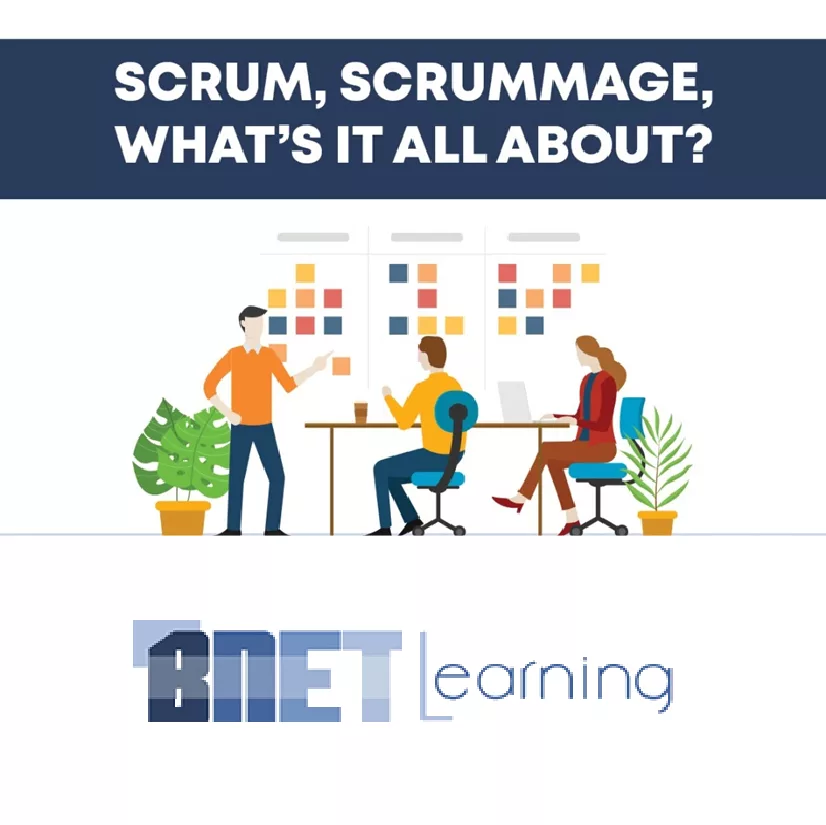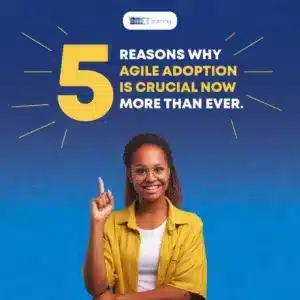The internet is awash with a million and one reason as to why Scrum is the best thing since sliced bread.
Every day you read stories of companies that quickly launch mind-boggling ideas and thus take over the world, leaving their competitors in the dust. And all based on two words: Agile and Scrum.
But what exactly is Scrum, and why do people keep going on and on about it? It’s as though Sir Alexander Fleming has once again discovered another line of penicillin. But in this instance, for the survival of businesses. What’s all the fuss about?
We will get to talk about the awesomeness of Scrum in a bit. But first, I must ask…
What is the first thing that comes to mind when you come across the term Scrum? Do you think of rugby players joining in a tight organized formation? Or rather, do you think of something a bit less injurious, like a project management methodology?
If you are a fan of rugby sport, you may need to look elsewhere. But if you want to know all about Scrum, the people, and the parts that make up its framework, then you have come to the right place!
Scrum to the Rescue
Many assume that Scrum is only used in information technology (IT) – which is incorrect. Scrum is all about how-to and not about technology. There is no syntax, no compiler, no programming language or source code.
So simply put, Scrum is a framework. It is a set of guiding principles that enable teams to deliver quality work and at regular intervals as agreed upon.
To get a bit more technical, Scrum.org defines it as a framework within which people can address complex adaptive problems, while productively and creatively delivering products of the highest possible value.’
Scrum was formerly used by teams to develop software efficiently and flexibly. It is already a success in the world of information and technology (IT), however, the framework is now being adapted and applied in other business functions such as marketing, sales, HR, and even finance.
To get even more technical, Scrum is really an answer to another software development model called Waterfall. In Waterfall, all the features of the product being developed are delivered at once. With no stages or phases. It’s as straightforward as ordering a piece of software, allowing the developers to do their work, and then getting the finished product at an agreed time, say a year.
It sounds convenient and straightforward at first and is the superior choice in some cases. But a lot can change in a year. What if the finished product no longer meets the market’s needs? What if the organization’s vision changes? What about the ever-changing regulatory landscape?
Yes, Waterfall is a pretty cool and straightforward process, however one with many potential problems.
So, obviously, in the case of a multifaceted and ever-evolving market, another approach is needed. Something more nimble, more sprightly, more agile.
Make way for Scrum! A framework that understands that you can’t eat an entire 12 tier cake in one bite, build Rome in one day or complete a software project in a year-long marathon.
Rather, work under Scrum is done in Sprints, a short, time-boxed period when a Scrum team works to complete a specific amount of work. During these periods, the developers create a potentially releasable Increment of the product. Each Increment is shown to the client, specifically to ensure that features included so far meet the clients’ needs.
That said, the primary objective of Scrum is to optimize value delivery. Delivering value is more important than fulfilling a predetermined plan. Scrum helps in the delivery of the most valuable product within the restrictions of a specific time and budget.
Developing a new product or a feature can be a daunting task. Having it succeed in a highly competitive market is even more of a challenge. Scrum guarantees more effective collaborations among teams working on projects to ensure success in the market.
People & Events of the Scrum Framework
The Scrum Framework is made of specific roles and events. Let’s check out each of these.
Scrum Roles
There are three distinct roles defined in Scrum:
Product Owner
The Product Owner represents the clients and ensures the scrum team is always delivering value to stakeholders and the business. The PO ensures this by making sure that the features of the product undergoing development are clearly communicated to the development team. The PO also determines product expectations, records changes to the product, and administers a scrum backlog.
Scrum Master
The Scrum Master (SM) is responsible for the Scrum process. The Scrum Master ensures that the team’s work is as effective as possible. This individual makes certain that Scrum rules are being enforced and practiced as intended. The Scrum Master also coaches and motivates the team, working to remove the obstacles that may prevent the team from meeting its goals and producing deliverable products.
Development Team
At the heart of the Scrum Team are the developers, the ones who create the actual product. Without them, the entire process would mean nothing. These are the guys with the business, design, analytical, and development skills to carry out the actual work, solve problems, and produce deliverable products.
Events in Scrum
Sprint Planning
The planning meeting is the first meeting of a new Sprint. It is a timeboxed working session that lasts about an hour for every week of a sprint. Here the entire team agrees to complete a set of product backlog tasks. This agreement defines the sprint backlog and is based on the team’s capacity and the length of the sprint.
Daily Scrum
During the Daily Scrum, the Development Team discusses the progress toward the Sprint Goal. Here the Sprint Backlog is adapted as required. Also, the team discusses the challenges encountered and how to deal with those obstacles.
Sprint Review
The Scrum Team presents the results of the Sprint to stakeholders during the Sprint Review. Here stakeholders gain insight into results, ask questions, and provide clarity for the Product Backlog. The team looks at what is happening in the market, the activities of competitors, and how to respond appropriately.
Sprint Retrospective
The Sprint Retrospective takes place right after the Sprint Review and before the next Sprint Planning. It is basically an “improvement” meeting held to identify potential pitfalls, past mistakes, and seek out new ways to avoid those mistakes. In other words, a sprint retrospective meeting is to figure out what is working and what isn’t. It is a continuous improvement activity to ensure that the team gets a little better every Sprint!
Winding Up
Well, that is a lot to take in in a short post, and there is a lot more I could write about (Scrum certifications, methodology, artifacts, etc.). Hopefully, this gives a broad overview that will help you understand the Scrum framework better.
I didn’t want to jump into the deep end straight away, but if you enjoyed this article and want to learn more about Scrum, you can either let me know in the comment section or contact the BNET Learning team via email at info@bnetlearning.com or call 08074429193
What’s more, consultation is free!
Now, I did promise to tell you why Scrum is amazingly incredible, right?
And here is why.
Scrum prevents you from wasting your precious time and money developing a product no one will want to use or pay for.
There you have it.
A simple and convincing reason to embrace the Scrum framework!






